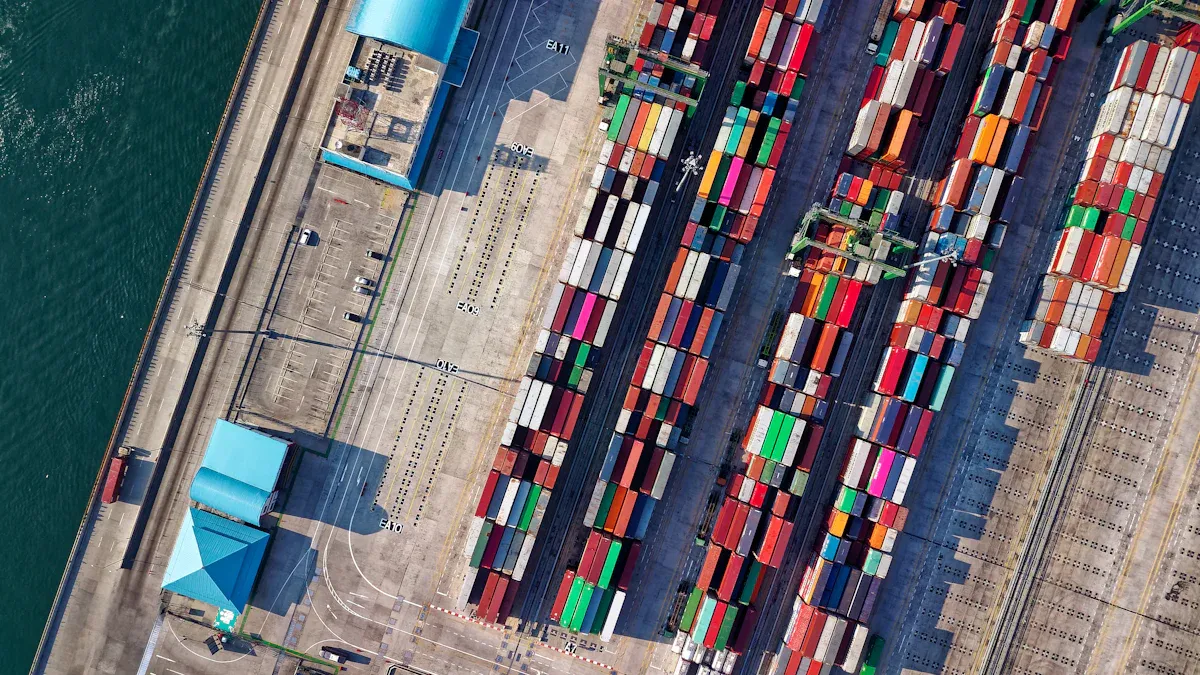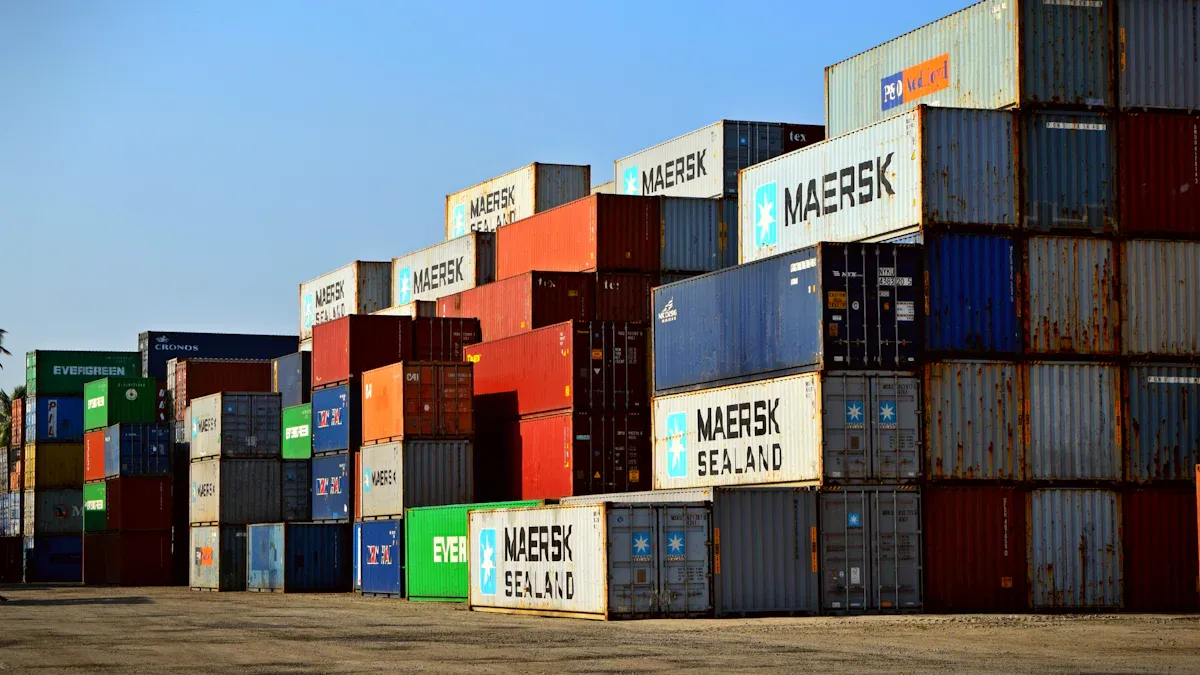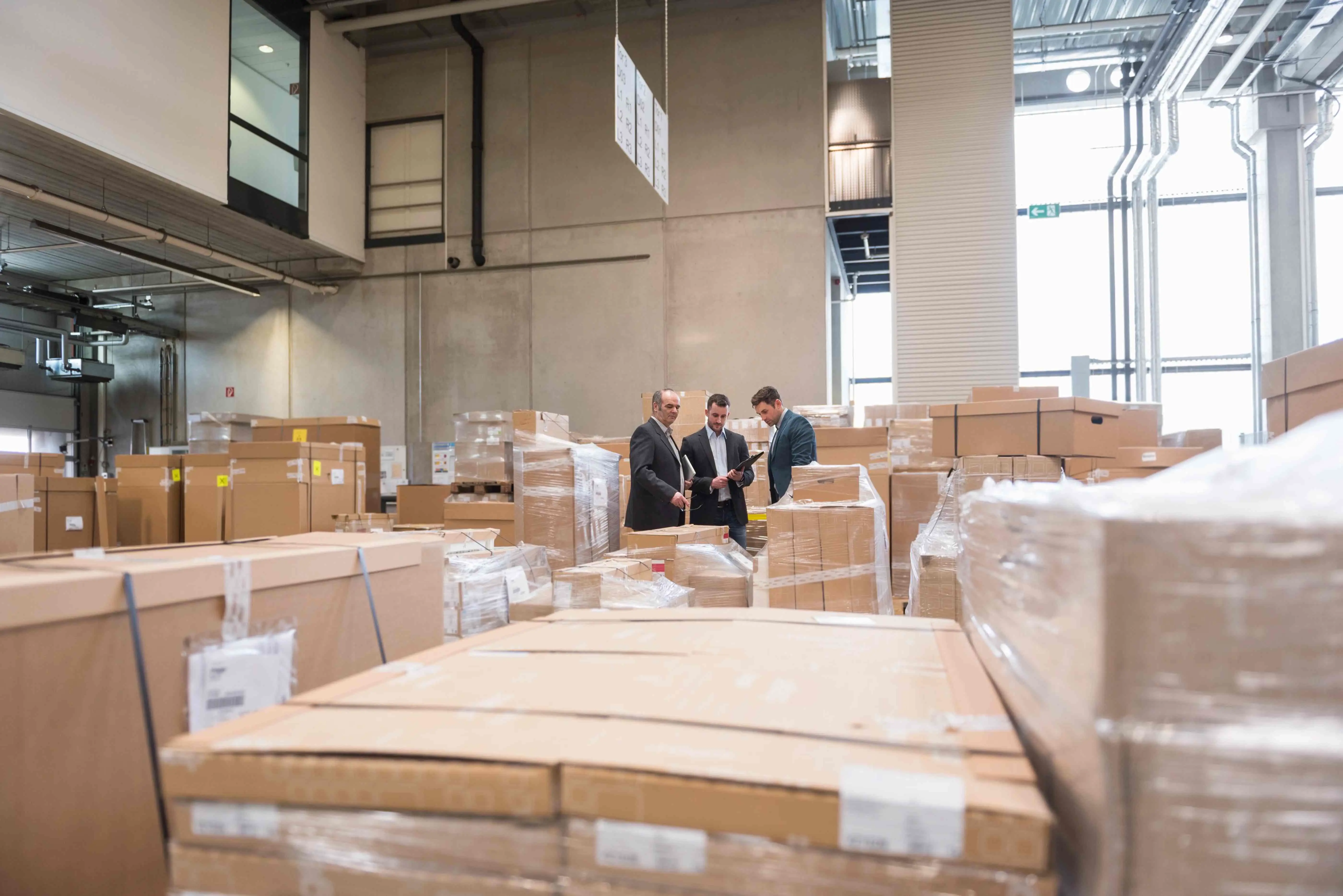Why the Logistics Industry Needs Better Data Now

Poor information in the logistics industry causes problems and raises costs. Bad logistics waste time and money, linking poor data to higher expenses. A study by Limao and Venables shows that bad transport slows trade and increases costs.
Wrong data also hurts customer trust. Gartner states that bad data costs companies in the logistics industry $12.9 million yearly. In April 2023, 65% of delivery complaints were about delays, damage, or missing items. These problems highlight why better data is needed in transport.
To compete, the logistics industry must focus on accurate, real-time data. This change will fix mistakes, aid decision-making, and enhance customer satisfaction.
Key Takeaways
Bad data costs the logistics industry over $600 billion yearly. Fixing data can save money and make work smoother.
Using new tools like IoT and AI helps track shipments live. This makes deliveries faster and reduces errors.
Collecting and sharing data in the same way improves accuracy. Clear rules and smart tools lower human mistakes.
Teaching workers to use data well helps decisions. Trained teams adjust quickly to supply chain changes.
Happy customers are key to success. Good data builds trust and ensures on-time deliveries, keeping customers happy.
The Current State of Data in the Logistics Industry

Common Causes of Bad Information in Freight Transportation
The logistics industry has big problems because of bad data. These problems come from old systems, manual work, and poor communication. Many companies still use outdated IT systems that cannot handle live data. This causes delays and makes it hard to see what’s happening.
Newer tools like the Internet of Things (IoT) and Artificial Intelligence (AI) can help fix these issues. They let companies use live data to improve supply chain tracking. But not all companies use these tools yet. For example:
Subsector | Percentage Using Freight Tracking Tools |
|---|---|
Logistics Service Providers | 59% |
Carriers | 55% |
Shippers | 50% |
Even with these tools, many companies find it hard to use them fully. This leads to missing or wrong data, which slows down freight transportation and creates problems.
Effects of Bad Data on Logistics and Warehousing
Bad data directly hurts logistics and warehousing work. When data is wrong or late, it causes problems in the supply chain. For example, wrong inventory numbers can cause too much or too little stock. Both problems cost money and waste time.
“Good data helps you make smart choices for your business. Bad data shows a false picture and can hurt results,” said Vishwa Ram, vice president of data science at Penske Logistics.
Bad data also wastes time and money. Teams may spend 20-50% of their time fixing errors or sorting messy data. Plus, 57% of shippers and 52% of logistics providers report data problems. These issues cost over $600 billion each year, says The Data Warehousing Institute.
Fixing these problems can save money and improve work. Tools like IoT and AI can give accurate, live data to help make better decisions.
The Consequences of Poor Information in Freight Transportation
Financial Impacts on the Logistics Industry
Bad data can hurt logistics companies' finances badly. Wrong data causes costly mistakes like billing errors and bad budgets. For example, Verizon Wireless paid $25 million for billing mistakes. Consolidated Edison also faced a lawsuit for charging customers wrong amounts. These examples show how bad data leads to big money losses.
On a larger scale, bad data costs companies $15 million yearly, says Gartner. In the U.S., bad data causes $3.1 trillion in losses each year. These numbers show why better data is needed to avoid losing so much money.
Operational Inefficiencies in Warehousing and Beyond
Wrong data slows down logistics work, especially in warehouses and transport. Bad routing raises fleet costs by 20-25%. Poor stock planning increases lost inventory costs by 30%. These problems waste time and money, delaying shipments and bookings.
The industry also faces issues like slow carriers and port delays. Without good, live data, it’s hard to plan routes or manage stock well. About 30% of logistics costs come from bad data, like wasted fuel and poor routes. Fixing these with better data can make work faster and cheaper.
Customer Dissatisfaction and Reputational Damage
Bad data makes customers unhappy. Late deliveries, broken items, and wrong orders upset them. In April 2023, 65% of delivery complaints were about delays or damage. These problems hurt trust and make customers angry.
Unhappy customers may leave and not return. In today’s market, having a good reputation is very important. Correct data helps deliver on time and keeps customers happy. By focusing on accurate data, companies can improve service and protect their image.
Why Better Data is the Solution for the Logistics Industry

Benefits of Accurate, Real-Time Data in Freight Transportation
Having accurate, real-time data changes how freight is managed. It helps handle large data quickly, reducing mistakes and improving work. Real-time tracking makes warehouses run better and keeps goods moving. This means faster deliveries with fewer problems.
Smart tools help make better choices. They predict issues and fix them early. For instance, live tracking warns about traffic or weather troubles. You can change routes fast to save time and money.
Good data also makes customers happier. Sharing live updates builds trust in your service. Customers feel secure knowing their orders are on time. Analytics also find ways to save money, like using less fuel. This cuts costs and helps the environment by reducing waste.
Here’s why better data helps logistics:
Better operations: Live tracking makes processes smoother.
Happier customers: Correct info builds trust.
Lower costs: Smart tools find savings.
Fewer risks: Early alerts prevent problems.
Using better data keeps you ahead in logistics and improves your work.
Case Studies: How JUSDA Transformed Logistics with Better Data
JUSDA shows how good data can change logistics. They made a platform using AI and blockchain. This tool gives live updates and boosts supply chain efficiency.
For example, JUSDA helped Sharp, an electronics company, improve its logistics. Sharp cut costs by 20% and sped up orders using JUSDA’s platform. Tools for planning and inventory helped avoid delays.
JUSDA’s platform also supports global freight work. It connects systems like ERP and WMS for smooth data sharing. This reduces mistakes and helps make better decisions. With JusLink, JUSDA offers live tracking and smart tools to solve problems fast.
These examples show how better data improves logistics. JUSDA proves that accurate, real-time data saves money, works better, and keeps customers happy.
How to Get Better Data in the Logistics Industry
Using Modern Tools in Freight Transportation
New tools can change how freight data is managed. Tools like machine learning and cloud systems make work faster and reduce mistakes. Machine learning organizes data quicker than people can. This cuts errors and speeds up tasks. Cloud systems store data safely and let you access it anytime.
Big data tools are also very helpful. They study large amounts of information from GPS and other systems. This helps make quick decisions to improve work. Real-time data is important too. It lets you track shipments, fix delays, and change routes quickly.
Tip: Correct data stops costly mistakes in billing and shipping. It also makes customers happy with on-time deliveries.
Using these tools can save money, improve tracking, and make freight work smoother.
Making Data the Same Across the Industry
Sharing and collecting data in the same way helps accuracy. Here’s how to do it:
Use Automatic Tools: Tools like barcode scanners and GPS reduce human mistakes.
Set Clear Rules: Make simple steps for handling data at every stage.
Switch to EDI Systems: EDI allows easy electronic data sharing.
Fix Data Problems: Use tools to find and correct wrong data.
Link Systems Together: Connect ERP, TMS, and WMS to share data easily.
Standardizing data improves quality and helps teams work together better. Everyone uses the same correct information, which reduces problems.
Teaching Workers to Use Data Well in Warehouses
Workers need to know how to use data properly. Training should teach them how to read and use data insights. For example, tracking training progress can show what needs improving. Changing lessons based on feedback helps workers learn better.
Note: Metrics like training completion rates and tool usage show how well workers adapt.
Trained workers make smarter choices using accurate data. This is key for handling changes in the supply chain. By training your team, you help them use better data to improve their work.

JUSDA Solutions
To provide you with professional solutions and quotations.
Bad data causes problems, wastes money, and upsets customers in logistics. These issues can be fixed by using correct, live information. Good data helps make better choices, saves money, and keeps customers happy.
Study | Topic | Key Findings |
|---|---|---|
Cotarelo et al. (2021) | Buying satisfaction | |
Hagberg and Holmberg (2017) | Shipping costs | Efficiency affects delivery expenses. |
Jain et al. (2017) | Products and pricing | Efficiency ties to product and pricing. |
Leaders like JUSDA use smart tools, share data, and train workers. These actions make work easier and improve customer experiences. Focusing on better data helps you stay ahead in the busy logistics world.
See Also
Exploring Big Data's Transformative Role In Supply Chains
Understanding Current Trends In Logistics Risk Management
The Importance Of Security In Modern Supply Chains
